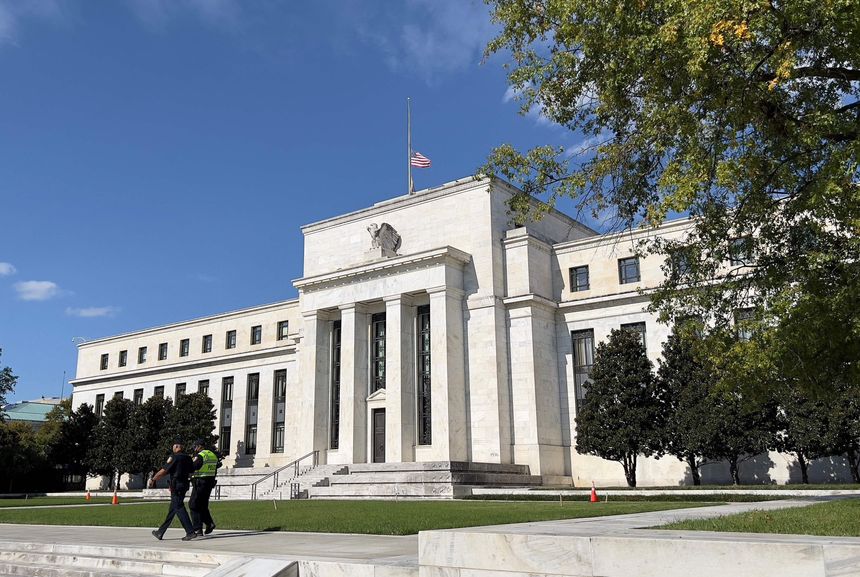
Fed officials appear poised to accelerate the wind-down of their stimulus efforts.
Photo: daniel slim/Agence France-Presse/Getty Images
The Federal Reserve’s two-day policy meeting, which wraps up Wednesday, is the highlight of this week’s economic calendar.
Wednesday
China’s consumption and investment might have been dented by the recent resurgence of Covid-19 infections and the nation’s property slump, while factory production likely picked up thanks to falling commodity prices and easing power shortages. Retail sales, a key gauge of consumer spending, are forecast to grow 4.5% from a year earlier in November, slowing from 4.9% in October, according to economists surveyed by The Wall Street Journal. Fixed-asset investment is expected to increase 5.2% in the first 11 months of the year, decelerating from a 6.1% increase recorded in the first 10 months. Industrial output likely rose 3.7% on year in November, speeding up from 3.5% in October.
U.S. retail sales are expected to grow at a solid pace in November, boosted by rising wages in a tight labor market, healthy household balance sheets and inflationary pressures that are causing prices to advance at the fastest pace in nearly 40 years.
Fed officials appear poised to accelerate the wind-down of their stimulus efforts, clearing the way for them to lift interest rates as soon as this spring. Such a move would indicate the Fed is refocusing its efforts more on restraining inflation and less on encouraging employment to return to pre-pandemic levels.
Thursday
The European Central Bank is contending with record inflation, rising Covid-19 cases and continued supply-chain disruptions. That leaves officials with a delicate balancing act at their December policy meeting, when they are expected to lay out plans to wind down an emergency program of bond purchases launched in 2020 to counter the effects of the pandemic.
The Bank of England had been expected to lift interest rates at its December meeting, but some economists say the emergence of the Omicron variant and new Covid-19 restrictions make it more likely that policy makers will remain on hold until February.
Surveys of purchasing managers in the U.S. and Europe are expected to show factory output is growing, though at a slower pace in December than November. Perhaps more important than the pace of growth, the reports will be closely watched for signs that transportation bottlenecks and parts shortages are easing.
Friday
The Bank of Japan is expected to maintain its ultra-easy monetary policy as prices remain flat despite global inflationary pressures. The bank’s policy board will likely discuss whether to extend its special lending program to support companies affected by the pandemic. The program is set to expire in March 2022.
Copyright ©2021 Dow Jones & Company, Inc. All Rights Reserved. 87990cbe856818d5eddac44c7b1cdeb8
Appeared in the December 13, 2021, print edition as ‘Economic Calendar.’








